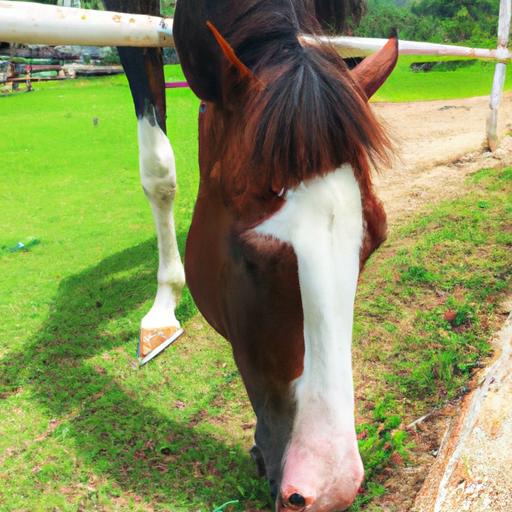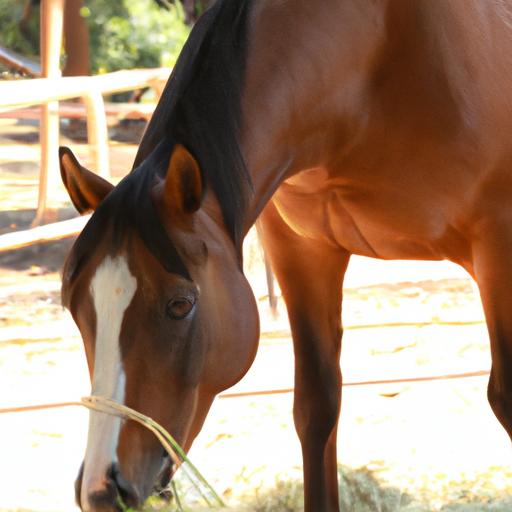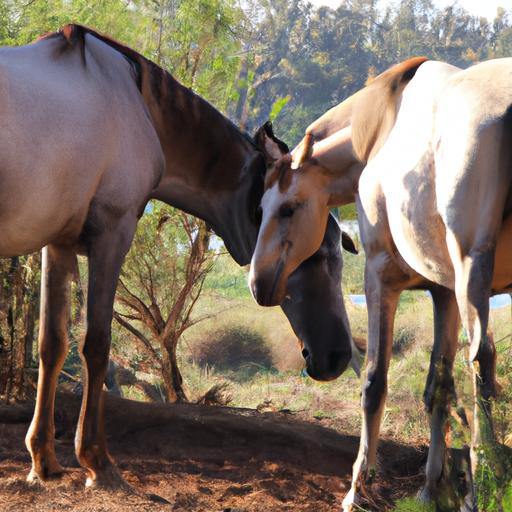Uncover the challenges and conservation efforts surrounding horse breeds native to different regions. Explore threats, preservation efforts, and the role of organizations.
Welcome, horse enthusiasts! Are you ready to embark on a journey to explore the captivating world of horse breeds native to different regions? Join me as we delve into the rich tapestry of equine heritage and discover the importance of understanding these magnificent creatures.
Introduction: Unveiling the Cultural Gems

Horse breeds native to various regions hold a profound significance that goes beyond their striking appearances. They are living testaments to our shared history, reflecting the cultural heritage and traditions of their native lands. By unraveling the mysteries surrounding these breeds, we gain a deeper understanding of their intrinsic value and the role they have played in shaping civilizations.
In this article, we will embark on an adventure to uncover the captivating stories behind these native horse breeds. From the wild moors of the United Kingdom to the sun-kissed plains of Spain, from the vast steppes of Mongolia to the vibrant landscapes of India, and from the rugged terrains of the United States to the enchanting charm of Mexico, we will traverse continents to explore the diversity of these equine treasures.
Appreciating the Significance

As we embark on this journey, it is essential to recognize the importance of understanding horse breeds native to various regions. These breeds are not mere horses; they are cultural gems intricately woven into the fabric of human history. By comprehending their origins and unique characteristics, we gain insights into the traditions, customs, and values of the communities that have nurtured them for generations.
But why should we invest our time in learning about these native horse breeds? The answer lies in the profound connection between humans and horses. Throughout history, horses have been our steadfast companions, enabling us to conquer new frontiers and forge bonds as partners in various endeavors. By understanding the breeds native to different regions, we can appreciate the diversity of equine capabilities and the depth of their contributions to our lives.
So, saddle up and join me on this captivating journey as we uncover the stories and secrets of horse breeds native to different regions. Together, let’s celebrate their beauty, honor their legacy, and embrace the remarkable tapestry of equine heritage that enriches our world.
Stay tuned for the upcoming sections where we will explore the fascinating native horse breeds in Europe, Asia, and the Americas. Get ready to be amazed by their unique characteristics, traits, and the tireless efforts undertaken to preserve these living treasures.
Remember, the beauty of horsemanship lies not just in riding, but in understanding and cherishing the magnificent creatures that have captivated our hearts for centuries. So, let the adventure begin!
Continue reading the next section to explore the native horse breeds in Europe.
Native Horse Breeds: Definition and Significance
Unveiling the Essence: What Defines Native Horse Breeds
To truly appreciate the significance of native horse breeds, we must first understand what makes them unique. Native horse breeds, as the name suggests, are horses that have evolved and thrived in specific regions for centuries, adapting to the local environment and becoming an integral part of the cultural and historical tapestry.
These breeds have developed distinct physical characteristics, temperaments, and traits that enable them to excel in their native habitats. Whether it’s the hardy and sure-footed ponies of the United Kingdom’s moors or the elegant and fiery Andalusians of Spain, each native breed has evolved in harmony with its surroundings, embodying the essence of its region.
Preserving the Legacy: Why Native Horse Breeds Matter
The significance of preserving and studying native horse breeds cannot be overstated. These breeds are not only a testament to the remarkable adaptability and resilience of horses but also serve as living links to our past. They offer a glimpse into the history, traditions, and ways of life of the communities that have nurtured them for generations.
By preserving native horse breeds, we ensure the continuation of unique genetic lineages that have evolved over centuries. These breeds possess invaluable qualities that may hold the key to addressing future challenges, such as climate change and equine health. Moreover, they contribute to the biodiversity of the equine world, enriching our understanding of the diverse capabilities and characteristics of these majestic creatures.
Guardians of Heritage: Native Horse Breeds in Culture and History
Native horse breeds have played pivotal roles in shaping the cultural heritage and history of their respective regions. From serving as loyal companions and trusted steeds in warfare to being revered symbols of nobility and prestige, these breeds have left an indelible mark on the societies they hail from.
For example, in the United Kingdom, native horse breeds like the sturdy Shetland pony and the majestic Highland pony have been integral to the daily lives and traditions of the local communities for centuries. Similarly, the renowned Andalusian horses of Spain have long been associated with the country’s rich equestrian traditions, captivating hearts with their grace and power.
By studying and appreciating the role of native horse breeds in culture and history, we gain a deeper understanding of the profound connections between humans and horses. These breeds are not just animals; they are living embodiments of the shared experiences, triumphs, and struggles of our ancestors.
Continue reading the next section to explore the characteristics and traits of native horse breeds.
Exploring Native Horse Breeds Around the World
Let’s continue our journey as we traverse continents to uncover the native horse breeds that grace different regions of the world. From the rolling hills of Europe to the exotic landscapes of Asia and the vast expanses of the Americas, each region boasts its unique equine treasures.
A. Native Horse Breeds in Europe
Europe, with its rich equestrian history, is home to a myriad of native horse breeds that have captivated horse lovers for centuries. Let’s explore two remarkable examples:
1. Native Horse Breeds in the United Kingdom
The United Kingdom is renowned for its exceptional equine heritage, and it is here that we find some of the most iconic native horse breeds. From the majestic elegance of the Thoroughbred to the hardy charm of the Shetland Pony, the United Kingdom offers a diverse range of native breeds that have left an indelible mark on the equestrian world.
2. Native Horse Breeds in Spain
Spain, with its vibrant culture and passion for horses, is home to some extraordinary native breeds. The Andalusian, with its breathtaking beauty and graceful movements, embodies the epitome of Spanish horsemanship. The sturdy and agile Galician Pony, originating from the lush green landscapes of Galicia, is another jewel in Spain’s equine crown.
B. Native Horse Breeds in Asia
Asia, with its vast and varied landscapes, is a treasure trove of native horse breeds that have played pivotal roles in the region’s history and culture. Let’s discover two fascinating examples:
1. Native Horse Breeds in Mongolia
Mongolia, with its nomadic traditions, boasts a breed that has become synonymous with the country’s identity—the Mongolian horse. These hardy and resilient horses have been integral to the nomadic lifestyle of the Mongolian people for centuries, enabling them to traverse the vast steppes and endure the harsh climate.
2. Native Horse Breeds in India
India, known for its rich tapestry of cultures, is home to several native horse breeds that showcase the country’s diverse equestrian heritage. The Marwari horse, with its distinctive inward-curving ears and regal presence, stands as a symbol of nobility and courage. The Kathiawari, known for its endurance and adaptability, hails from the rugged terrains of Gujarat, embodying the spirit of resilience.
C. Native Horse Breeds in the Americas
The Americas, with their vast landscapes and diverse cultures, harbor unique native horse breeds that represent the spirit of the land. Let’s explore two captivating examples:
1. Native Horse Breeds in the United States
The United States boasts a range of native horse breeds that highlight the country’s rich equestrian heritage. From the hardy and versatile American Quarter Horse, beloved for its speed and agility, to the gentle and majestic Appaloosa, renowned for its striking coat patterns, each breed tells a story of the American West and the pioneering spirit that shaped the nation.
2. Native Horse Breeds in Mexico
Mexico, with its vibrant culture and deep-rooted equestrian traditions, is home to the Azteca horse. This versatile breed combines the strength and agility of the Andalusian with the endurance and resilience of the Quarter Horse, making it a beloved choice for various equestrian disciplines.
Continue reading the next section to unravel the unique characteristics and traits that make these native horse breeds truly exceptional. Let’s dive deeper into the world of equine wonders!
Unveiling the Unique Characteristics and Traits
When it comes to horse breeds native to various regions, their physical attributes, behavioral traits, adaptability, and versatility set them apart from other breeds. Let’s delve into the captivating aspects that make these native horses truly remarkable.
A. Physical Attributes: A Glimpse of Natural Beauty
Native horse breeds possess distinct physical attributes that have developed over centuries of adaptation to their native environments. From sturdy and compact builds to sleek and elegant frames, each breed showcases its own unique beauty.
Take, for instance, the native horse breeds in the United Kingdom. The iconic Shetland pony, known for its small stature and robust physique, thrives in the harsh conditions of the Shetland Isles. On the other hand, the Andalusian horse, native to Spain, enchants with its graceful movements, long flowing mane, and expressive eyes.
B. Behavioral Traits: The Essence of Character
Beyond their physical appearance, native horse breeds exhibit behavioral traits that further distinguish them. These traits are often deeply rooted in their ancestral history, shaped by the demands of their native environments and the interactions with humans.
Mongolia’s native horse breed, the Przewalski’s horse, showcases remarkable survival instincts and a strong herd mentality, forged by its ancestors’ adaptation to the harsh steppes. In contrast, the Marwari horse from India displays a spirited and courageous nature, reflecting its historical role as a warhorse.
C. Adaptability and Versatility: Thriving in Diverse Settings
One of the remarkable aspects of native horse breeds is their adaptability and versatility. Over generations, these horses have proven their ability to thrive in a wide range of environments, showcasing their resilience and adaptability.
For example, native horse breeds in the United States, like the American Quarter Horse, are renowned for their versatility. Whether it’s excelling in Western disciplines, racing, or working on ranches, these horses have proven their mettle in various roles. Similarly, the Azteca horse from Mexico demonstrates its adaptability, effortlessly transitioning between disciplines such as dressage, reining, and trail riding.
As we explore the characteristics and traits of native horse breeds, we gain a greater appreciation for their remarkable qualities. From their physical attributes that reflect their natural beauty to their behavioral traits that reveal their unique personalities, these horses are a testament to the wonders of nature and the enduring bond between humans and horses.
Stay tuned for the upcoming sections where we will delve into the challenges faced by native horse breeds and the conservation efforts undertaken to protect their legacy.
Conclusion: Embracing the Legacy of Native Horse Breeds
As we conclude our exhilarating journey through the world of horse breeds native to different regions, let us pause to reflect on the profound significance they hold. These majestic creatures are not just horses; they are living connections to our past, embodying the cultural heritage and history of their native lands.
Throughout this exploration, we have witnessed the diversity and splendor of native horse breeds in Europe, Asia, and the Americas. From the graceful elegance of the United Kingdom’s native breeds to the spirited resilience of Mongolia’s equine companions, each breed has its own unique story to tell.
Understanding and preserving these native horse breeds is of utmost importance. However, they face numerous challenges that threaten their existence. Habitat loss, genetic dilution, and changing demands in the modern world pose significant threats to their survival. Without intervention, we risk losing these irreplaceable treasures forever.
Yet, there is hope. Dedicated individuals and organizations around the globe have taken up the mantle of conservation, working tirelessly to protect and preserve these native horse breeds. Through breeding programs, education initiatives, and advocacy, they endeavor to ensure a future where these majestic equines continue to thrive.
Breed registries and organizations play a pivotal role in the conservation efforts. They maintain breed standards, promote responsible breeding practices, and provide a platform for collaboration and knowledge-sharing among enthusiasts. By uniting under a common cause, they amplify their impact and empower future generations to carry the torch of preservation.
In conclusion, the legacy of horse breeds native to various regions is one that deserves our reverence and admiration. As we bid farewell to this captivating journey, let us not forget the importance of cherishing and protecting these living treasures. By embracing their beauty, honoring their history, and supporting conservation efforts, we ensure that the spirit of these native horse breeds lives on for generations to come.
Thank you for joining me on this exploration of horse breeds native to different regions. Remember to visit Horsemasterypro.com for more insights, resources, and stories that celebrate the timeless bond between humans and horses.
Safe travels, fellow equestrians, and may your journey be filled with the grace and spirit of these remarkable equine companions.
*This concludes the article.


